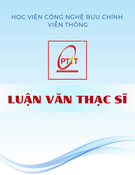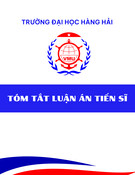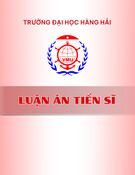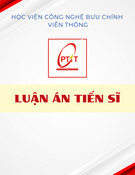Giới thiệu tài liệu
Truong tập hợp các thuật toán SLAM (Simultaneous Localization and Mapping) trên Robot Operating System (ROS), chỉ dành cho các máy bay nhỏ UAS với việc sử dụng dữ liệu phân tầng từ một loạt các sensor. Nghiên cứu đánh giá hiệu suất của thuật toán SLAM này bằng việc so sánh chất lượng các bản đồ đã tạo, một metric cũ đã được sử dụng, nhưng có vẻ có nhiều khuyết điểm trong đó. Bởi vậy, trong thời gian qua, đã phát triển ra hai metric mới.
Đối tượng sử dụng
Nhóm nghiên cứu kỹ thuật và doanh nghiệp chuyên sản xuất các máy bay nhỏ UAS.
Nội dung tóm tắt
Truong tập hợp các thuật toán SLAM (Simultaneous Localization and Mapping) trên Robot Operating System (ROS), chỉ dành cho các máy bay nhỏ UAS với việc sử dụng dữ liệu phân tầng từ một loạt các sensor. Đây là một cuốn theo dõi trên SLAM, khoảng cách thuốc và cuộc quay lại, đặc biệt là hệ thống góp phần và các phương pháp xử lí từ tập hợp chi phí. Nghiên cứu đánh giá hiệu suất của thuật toán SLAM này bằng việc so sánh chất lượng các bản đồ đã tạo, một metric cũ đã được sử dụng, nhưng có vẻ có nhiều khuyết điểm trong đó. Bởi vậy, trong thời gian qua, đã phát triển ra hai metric mới, bao gồm Metric 1 (Các biểu diễn tương ứng của khoảng cách phân tầng và chỉ số hiệu suất) và Metric 2 (Các biểu diễn tương ứng của độ sự đoán trên bản đồ và chỉ số hiệu suất). Tuy nhiên, nghiên cứu cũng cho thấy một số nhóm SLAM có thể ít hay hơn so với các phương pháp khác theo cả hai metric. Ngoài ra, trong cuốn theo dõi này cũng cho biết các hạn chế liên quan đến mỗi metric, và tình huống khi nó có thể không phù hợp.































